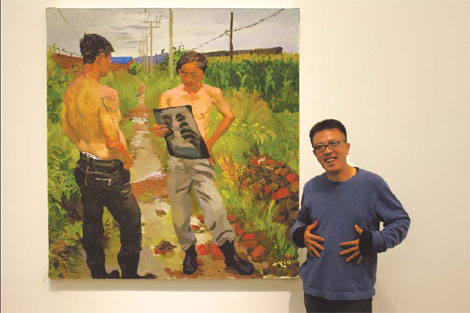Editor’s note:
In the West, contemporary Chinese art has become the subject of intense fascination and speculation. AT WORK: Twenty-five Contemporary Chinese Artists by writer and photographer Jon Burris profiles 25 top contemporary Chinese painters, sculptors, photographers and conceptual artists. It shows why many believe China is the next “tidal wave” of opportunity for art collectors: the sheer creative output, the artistic variety and diversity now blooming from within a country where, only a few decades ago, such expression would have been repressed. The book takes the reader into the artists’ studios and presents intimate glimpses into their life and work, offering a lingering portrait of the contemporary Chinese art scene. This year we will serialize the book, published by Foreign Languages Press in 2011, which details the historical, political and cultural mimesis shaping China’s contemporary artists.
 |
|
By the time I saw one of Liu Xiaodong’s paintings in person, in the summer of 1995 at the Central Academy of Fine Arts in Beijing, he was completing his Master’s degree and was already a recognized member of what was called the New Generation artists. His work had been included in the infamous China Avant-garde exhibition at the National Gallery in 1989 but by the mid-1990s critics were applying the term neo-Realist to him, placing him in a different category from the Cynical Realists with whom he had previously been identified. Personally, I felt his work was so different; it belonged in a class by itself.
I can remember thinking that his figurative paintings of people, mostly friends, family, fellow students and artists, were as immediate and forceful as anything I had seen by any other contemporary Chinese artist. Liu’s paintings were honest and direct. Stylistically, they were expressionistic, full of energy and color, yet they were realistic enough to define their subjects: everyday people in settings anyone could relate to.
We Recommend:
